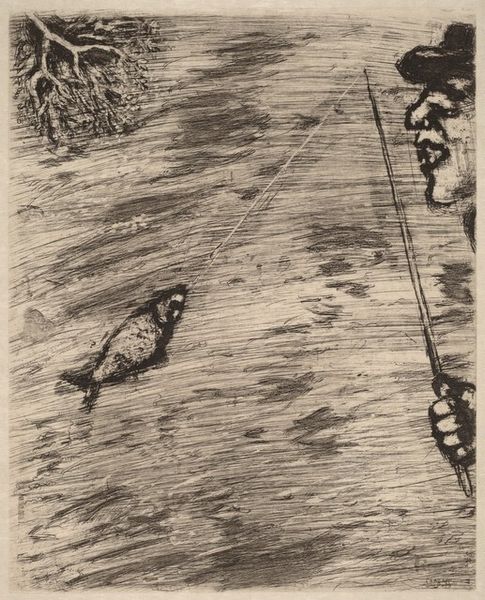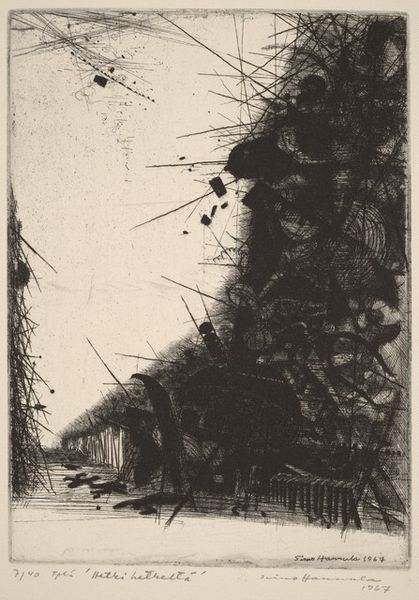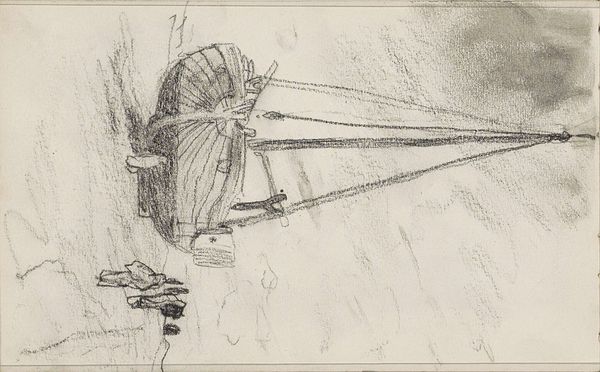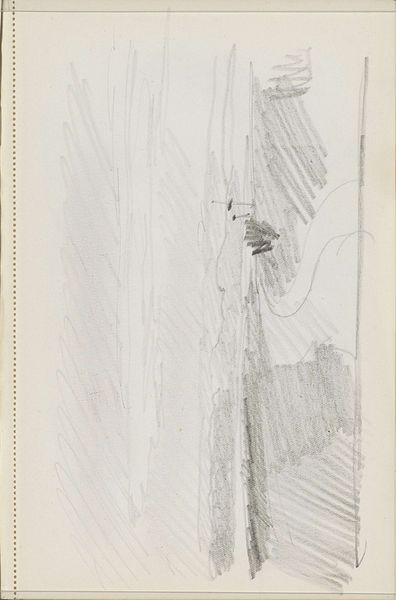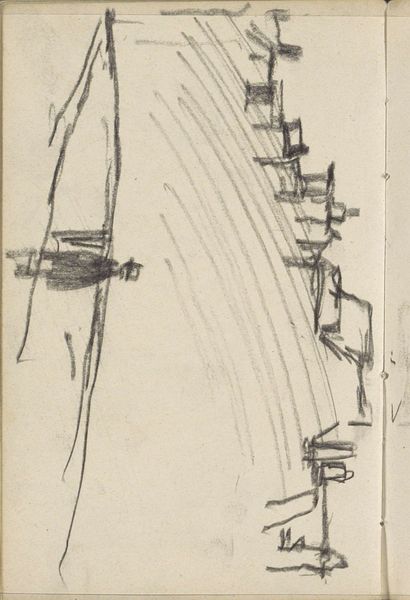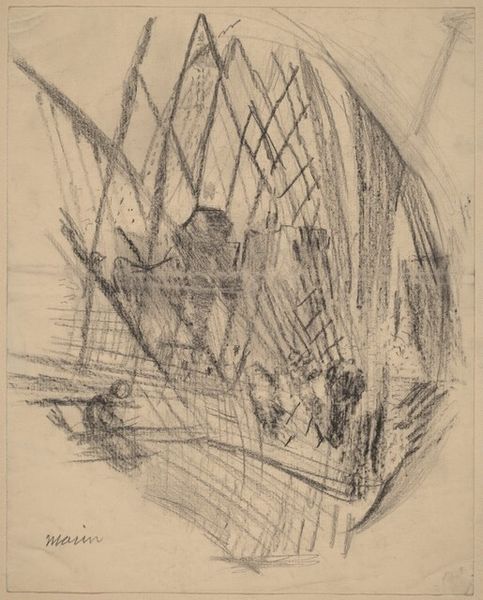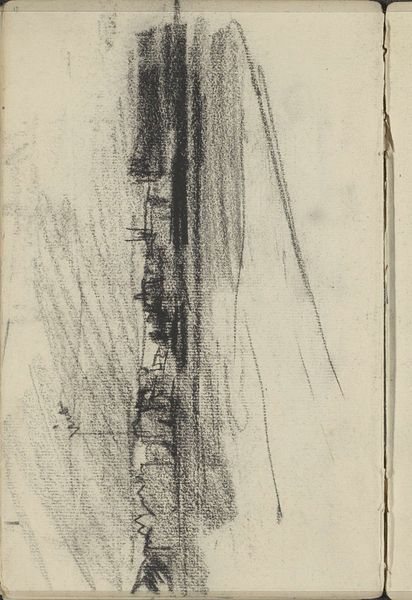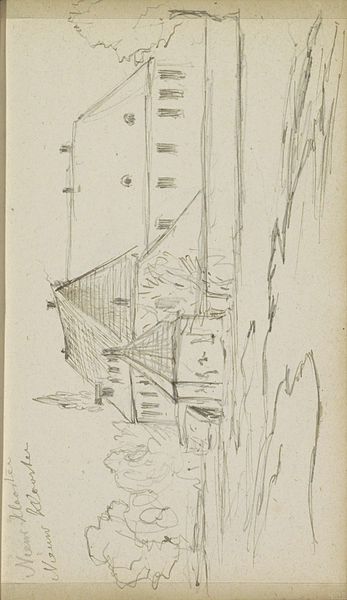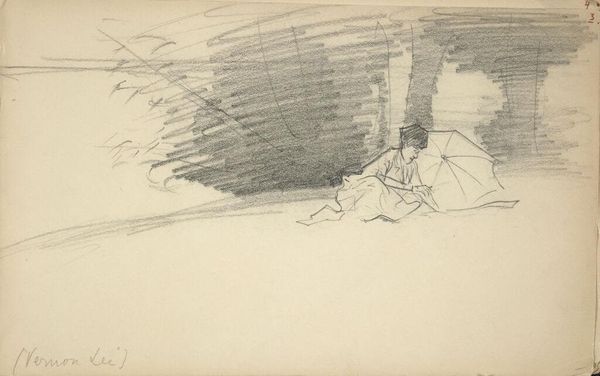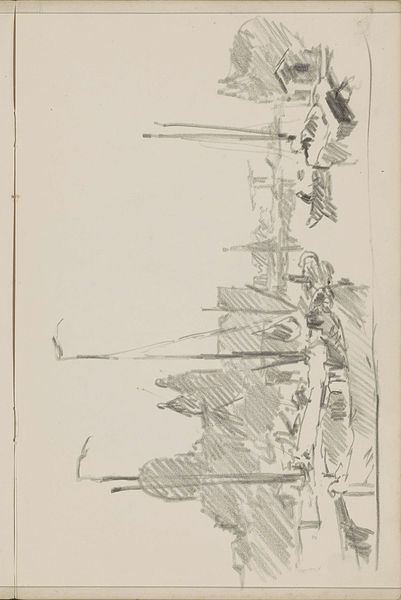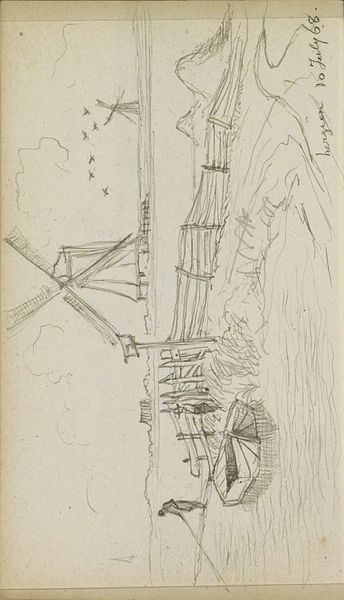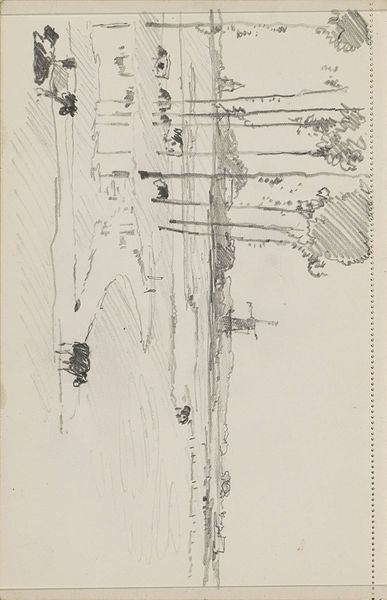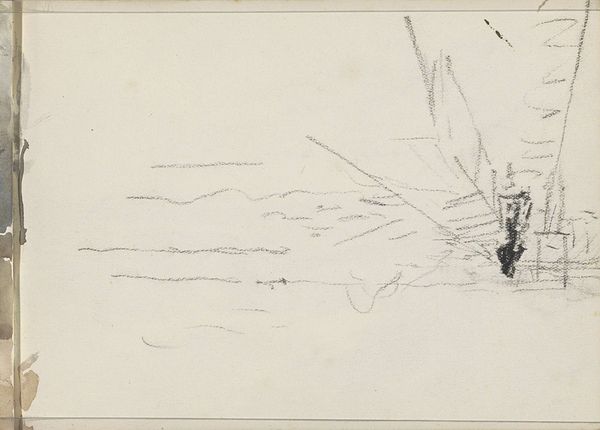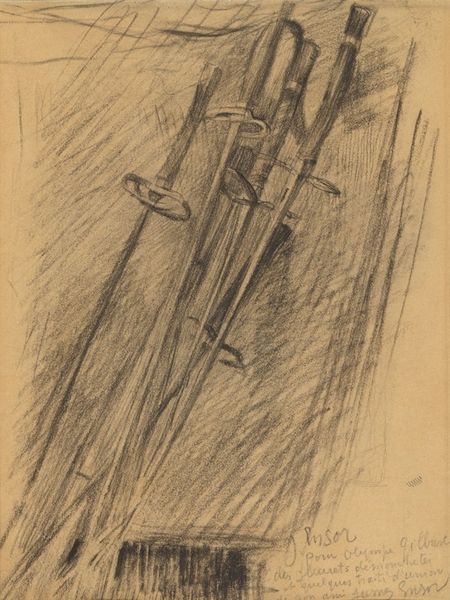
#
amateur sketch
#
light pencil work
# print
#
pen sketch
#
pencil sketch
#
personal sketchbook
#
ink drawing experimentation
#
pen-ink sketch
#
pen work
#
sketchbook drawing
#
fantasy sketch
Copyright: National Gallery of Art: CC0 1.0
Editor: Here we have Arthur Briscoe's "The Main Rigging," created in 1928. It's a print, seemingly an etching. The lines are incredibly fine, creating this delicate web, but also portraying this really tough job of climbing the rigging. What catches your eye about this print? Curator: The print immediately calls to mind the Romantic fascination with maritime power, but viewed through a distinctly modern lens. Before, let's say Turner’s "Fighting Temeraire," celebrated ships as symbols of national prowess. Briscoe’s piece, created after the First World War, acknowledges the grandeur, yet seems to focus more on the laborers, the individual sailors who maintained these vessels. It shifts the heroic narrative from the ship itself to the working class. Do you get a sense of that shift? Editor: I see what you mean. The focus *is* definitely on the labor. How does the technique play into this revised narrative? Curator: The etching process itself, with its painstaking detail, highlights the sailors' meticulous and often dangerous work. Consider that printmaking at this time, and its availability to wider audiences, democratized images. It made subjects like these sailors accessible and visible in ways previously unseen. These were not officers, but common men undertaking essential, perilous tasks. Does that interpretation resonate with you? Editor: It does. I hadn't considered the impact of printmaking on social visibility like that. It gives the image a totally different context. Curator: Exactly. It moves beyond mere documentation and becomes a form of social commentary, implicitly questioning earlier artistic glorification of maritime power that overlooked the contributions – and risks – of ordinary seamen. Editor: So, seeing this print as more than just a ship portrait but as a historical reflection of class and labor has given me so much food for thought. Thank you! Curator: A great observation! Thinking about the politics embedded in visual representation can really shift our understanding.
Comments
No comments
Be the first to comment and join the conversation on the ultimate creative platform.
